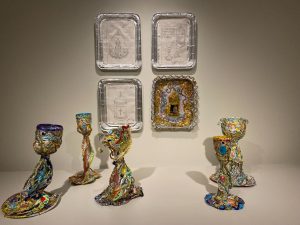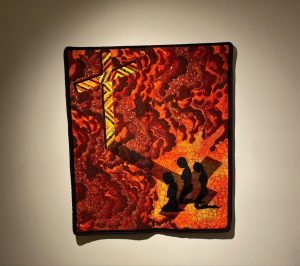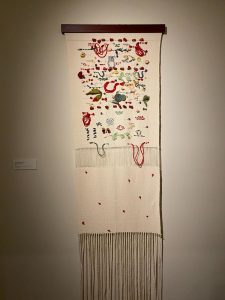On April 25, Jamaica Kincaid, a renowned Antiguan novelist and essayist, was awarded the 2024 St. Louis Literary Award at Sheldon Concert Hall.
This event was the culmination of a year-long series of book talks and other preliminary affairs in expectation of Kincaid’s arrival at Saint Louis University. The ceremony, featuring a short preview of a new documentary film about the St. Louis Literary Award and an excerpt from SLU Dance’s upcoming Spring performance, also included an audience that nearly filled the 712-seat capacity of the Concert Hall and was comprised of both SLU students and faculty as well as various community members.
Through her acceptance of the award, Kincaid joins a storied list of honorees which includes, in recent years, names such as Margaret Atwood and Neil Gaiman, and, in more distant decades, titans of 20th-century literature such as Don Delillo and W.H. Auden.
Dr. Joya Uraizee, a professor in SLU’s English Departments with research interests in African and Postcolonial Literature, spoke on the importance of the annual award to the broader St. Louis community.
“Some of the world’s finest writers have been the recipients of the St. Louis Literary Award,” Uraizee said. “Every year, the St. Louis community has a unique opportunity to be part of the conversation, as these writers share details of their lives and work.”
For over 50 years, the Literary Award Program has given St. Louis residents the opportunity to engage with the most prominent writers of their time. After Kincaid formally accepted the award, she participated in a Q&A session with Dr. Maryse Jayasuriya, a SLU English professor with research interests in Postcolonial and South Asian Literature.
Throughout the session, Kincaid spoke on her childhood experiences in Antigua, her relationship with her mother, her thoughts on botany as a mode of literary expression and her time spent writing for the New Yorker through the 1970s and ‘80s.
For readers of her most prominent novels, such as “Annie John” and “The Autobiography of My Mother,” these topics came as no surprise, and, yet, the deep wisdom and sharp wit with which Kincaid spoke of them left many in the audience caught between hallowed admiration and broad fits of laughter.
On the morning following her acceptance of the award, Kincaid participated in a Craft Talk focused more specifically on her writing processes and various visions and hosted by the Executive Director of the St. Louis Literary Award Program, Edward Ibur, as well as Kate Essig, a SLU Graduate Student in the Education Department.
During this talk, she also discussed at length her forthcoming book, “An Encyclopedia of Gardening for Colored Children,” which she said is “the kind of book that [she] would have wanted as a child,” and explores the overlap between geography, botany and the political history of the plant species which constitute our Earth.
As part of her trip to St. Louis, Kincaid was treated with a tour of the Missouri Botanical Gardens led by five plant scientists, which Edward Ibur, the Executive Director of the St. Louis Literary Award, said was his favorite moment from Kincaid’s visit.
After spending extensive time with Kincaid throughout the ceremonies and other events, Ibur reports that she “is one of the most unique, fascinating, and brilliant people I’ve ever met. Everywhere we went, she was inquisitive, energetic, and full of enthusiasm.”
Next year’s honoree, as announced at the end of the ceremony, will be Colson Whitehead, renowned American novelist and author of the acclaimed books “The Underground Railroad” and “The Nickel Boys.”
For more information about the St. Louis Literary Award please visit: https://www.slu.edu/library/st-louis-literary-award-programs/literary-award/index.php



